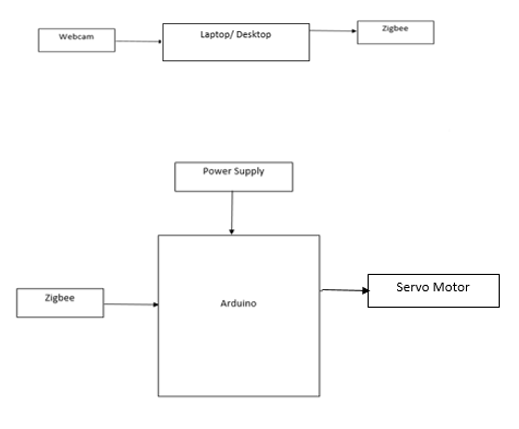Face Recognition Based Door Lock System using Arduino and Webcam
Objective
The main objective of this project is to develop a cost effective system for higher security purpose that will only allow the authorized person by their facial features
Abstract
In today's world, face recognition is an important part for the purpose of security and surveillance. Hence there is a need for an efficient and cost effective system. With the use of the Raspberry Pi kit, we aim at making the system cost effective and easy to use, with high performance. There are various security systems like fingerprint, voice, signatures, face detection and so on. Among these face detection appears quite exciting and catching attention of the people.
In this project we are going to detect the faces using web cam and laptop.To perform face detection you will need to create a set of data with images of faces. This data will be stored as data base in a particular path. When a person enters in front of camera system will checks for the image in the database and displays name on the image. If the image is not stored in the database unknown will be displayed on the monitor. If known image means, data will be sent to Arduino through zigbee and further door will open which is indicated by servo motor.
Keywords: OpenCV, Face Recognition, Arduino, Zigbee.
NOTE: Without the concern of our team, please don't submit to the college. This Abstract varies based on student requirements.
Block Diagram

Specifications
Hardware Requirements:
- Webcam
- Zigbee
- Arduino
- Servo motor
- 9V Battery
- Battery Clips
- Connecting Wires
Software Requirements:
- Arduino IDE
- Embedded C
- Python3 IDLE
Learning Outcomes
- Arduino Uno Pin diagram and Architecture
- How to install and setting up of Arduino IDE and Python3 IDLE
- Basics of Embedded C and Python
- Zigbee interface with Arduino Uno.
- Motor driver and motor interface with Arduino Uno.
- Face recognition using python
- About Project Development Life Cycle:
- Planning and Requirement Gathering( software’s, Tools, Hardware components, etc.,)
- Schematic preparation
- Code development and debugging
- Hardware development and debugging
- Development of the Project and Output testing
- Practical exposure to:
- Hardware and software tools. ,
- Solution providing for real time problems,
- Working with team/ individual,
- Work on Creative ideas.
- Project development Skills
- Problem analyzing skills
- Problem solving skills
- Creativity and imaginary skills
- Programming skills
- Deployment
- Testing skills
- Debugging skills
- Project presentation skills
- Thesis writing skills





 Paper Publishing
Paper Publishing
